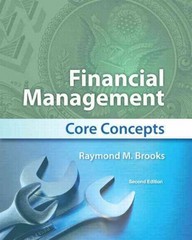Which of the following statements is (are) true about shares? (There may be more than one correct answer. You will lose marks by choosing a wrong answer. The minimum mark for the question is zero.) Select one or more: a. None of the statements are true. b. Companies can raise capital in secondary markets by issuing new shares. c. Direct search markets provide the best price information. d. An active secondary market for shares makes raising capital less expensive for firms. e. Shares are certificates of ownership of a corporation. f. Secondary market transactions in Australia mostly take place over the counter. UD Which of the following statements is (are) true about capital budgeting? (There may be more than one correct answer. You will lose marks by choosing a wrong answer. The minimum mark for the question is zero.) Select one or more: a. It involves identifying projects that will add to a firm's value. b. It allows a firm to reverse the decision of large capital investments at any time. c. It allows a firm's management to analyse potential business opportunities and decide on which ones to undertake. d. It involves identifying projects with the lowest risk level. e. It involves managing expenses of a business. f. None of the statements are true. Jenny takes out a 20-year home loan of $800,000. The bank charges 3.6% p.a. compounded monthly with an interest-only period of 5 years. After the interest only period, Jenny makes equal month-end repayments. Calculate how much Jenny needs to pay every month after the interest only period. (Round your answer to 2 decimal places. Do not include the $ symbol. Do not use comma separators. E.g. 1234.56) Answer: Helen takes out a 30-year home loan of $900,000. She makes equal month-end repayments of SX at the interest of 6% pa. compounded monthly. 10 years after Helen takes out the home loan, the loan outstanding balance becomes $753,171.52. The bank increases the interest rate to 7.2% p.a. compounded monthly. Helen has to increase her monthly repayment to SY in order to repay the loan in the remaining 20 years. Which of the following equations can be used to find the increased monthly repayment $Y?(There may be more than one correct answer. You will lose marks by choosing a wrong answer. The minimum mark for the question is zero.) (2 marks) Select one or more: a. 753171.52 Y 0.006 (1 - 1.006-240) Ob 900000 Y 0.006 (1 - 1.006-360) c. None of the equations give the correct answer. O d. 753171.52 900000 . (1.006)120 Y + (1.006120 - 1) 0.006 De 753171.52 (1.006)240 Y 0.006 (1.006240 - 1) Y f. 753171.52 = (1.006240 - 1) 0.006 Andrew takes out a 30-year home-loan of S650,000. The bank charges interest at 6% p.a. compounded monthly. Andrew repay the same amount at the end of each month for the whole loan term. Help Andrew to prepare the loan repayment schedule for month 61 below. (Round your answer to 2 decimal places. Do not include the 5 symbol. Do not use comma separators. E.g. 1234.56) Month Opening balance of the loan Interest Paid Principal Paid Ending balance of the loan 161 Henry takes out a 15-year loan of $300,000 today. The bank charges interest at 4.4% p.a. compounded quarterly. During the first 5 years of the loan term, Henry will repay $6,000 at the end of each quarter. After that period, Henry will pay $X at the end of each quarter in order to repay the loan on time. Which of the following can be used to calculate $X. (There may be more than one correct answer. You will lose marks by choosing a wrong answer. The minimum mark for the question is zero.) Select one or more: a. None of the equations give the correct answer. 6000 X Ob. 300000 + (1 - 1.044-5)+ (1 - 1.044-10) 0.044 0.044 6000 c 300000 + (1 - 1.011-20) + + (1 - 1.011-40) 0.011 0.011 6000 d. 300000 (1 - 1.011-20) + + (1 - 1.011-40). (1.011)-20 0.011 0.011 6000 X e. 300000 (1.011)20 (1.01120 - 1) = (1 - 1.011-20) 0.011 0.011 6000 Of 300000 . (1.011)20 (1.01120 - 1) = + (1 - 1.011-40) 0.011 0.011












